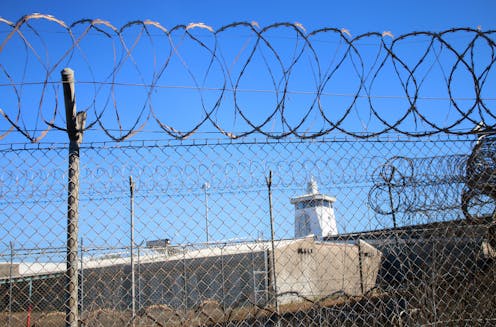The UN committee against torture has found Australia still has work to do
- Written by Andreea Lachsz, PhD Candidate, University of Technology Sydney

Content warning – this article discusses acts of violence, suicide, and deaths in custody.
Australia appeared before the United Nations Committee against Torture[1] on November 15 and 16 2022. This UN body monitors compliance with the UN Convention against Torture and Other Cruel, Inhuman or Degrading Treatment or Punishment[2], to which Australia[3] voluntarily signed up in 1989.
One of Australia’s obligations[4] under the convention is to prepare a report[5] for the committee every four years, and appear before the committee[6]. The committee considered the report prepared by Australia, as well as information provided by civil society organisations such as the Victorian Aboriginal Legal Service[7], the Australian Human Rights Commission[8] and the Commonwealth Ombudsman[9]. The committee’s approach was to engage in constructive dialogue with the Australian government.
At the end of last week, the committee published its concluding observations[10], which provide guidance to Australia on both preventing torture and ill-treatment, and strengthening accountability mechanisms.
It noted work still lies ahead for Australia, particularly in relation to the continued over-incarceration of Aboriginal and Torres Strait Islander people, deaths in custody and raising the age of criminal responsibility.
Read more: Dragging its feet on torture prevention: Australia’s international shame[11]
What constitutes torture?
Under the convention, torture is defined as:
any act by which severe pain or suffering, whether physical or mental, is intentionally inflicted on a person for […] obtaining […] information or a confession, punishing […] or intimidating or coercing […] or for any reason based on discrimination […] where the pain or suffering is inflicted by or at the instigation of or with the consent or acquiescence of a public official.
Torture is much broader than those practices which often spring to mind, such as testimonials of waterboarding[12] that have come out of Guantanamo Bay.
Importantly, while the committee does consider torture, it also considers cruel, inhuman or degrading treatment or punishment, also prohibited under the convention.
First Nations deaths in custody
The committee noted the increase in deaths in custody, linked to increasing incarceration rates. It was particularly concerned that Australia should address the over-incarceration of Aboriginal and Torres Strait Islander people. The Australian delegation itself acknowledged “transformational change is required to reverse the trend” of ever-increasing incarceration rates.
Causes of death included “use of force, lack of health care and suicide”. The committee recommended all deaths in custody be “promptly, effectively and impartially investigated by an independent entity”. It also suggested reviews of current prison healthcare and prevention strategies for suicide and self-harm.
Improving conditions and treatment in places of detention
Australia appeared before the committee in the same week the Four Corners report Locking Up Kids[13] was released. The report, examining the treatment of children in youth prisons, received national attention.
The UN committee was concerned about the use of solitary confinement, and reports children “are frequently subjected to verbal abuse and racist remarks, [and] restrained in ways that are potentially dangerous”. It called for prompt investigation of “all cases of abuse and ill-treatment of children in detention” and adequate sanctions for perpetrators.
The committee concluded Australia should raise the minimum age of criminal responsibility from ten years old, something First Nations groups such as Change the Record[14] have been campaigning on for years.
It also emphasised the need to alleviate the overcrowding of detention facilities, and said keeping someone in pre-trial detention (prior to them being found guilty of an offence) should only be used “in exceptional circumstances and for limited periods”.
Read more: Locking up kids has serious mental health impacts and contributes to further reoffending[15]
Further recommendations
The committee made detailed recommendations about current practices in Australia, including:
medical services should be improved, as they are inadequate in many places. It referred to reports that prisons “lack the appropriate capacity, resources and infrastructure to manage serious mental health conditions”
the use of spit hoods “in all circumstances across all jurisdictions” must end
solitary confinement must be used “only in exceptional cases as a last resort for as short a time as possible,” and never for children
strip searches must not be performed routinely and must be conducted “in a manner that respects […] dignity”
restraints must be “used only as a last resort” to prevent harm to the individual or others. Use of force (including restraints) should not be used as a “means of coercion or to discipline children”
tasers must be used “exclusively in extreme and limited situations”, “where there is a real and immediate threat to life or risk of serious injury”.
Preventing torture and ill-treatment
The committee expressed concerns with the delay in establishing and funding the Australian National Preventive Mechanism[16] - bodies that visit places of detention. It noted the upcoming, extended deadline to meet this obligation under the Optional Protocol to the Convention against Torture and other Cruel, Inhuman or Degrading Treatment or Punishment[17], on January 20 2023.
The committee said it “deeply regrets” the UN Subcommittee on Prevention of Torture had to suspend its Australia visit[18] due to “insufficient cooperation” from Australia in providing access to sites and other means of cooperation.
The subcommittee has since invited Australia[19] “to provide all necessary assurances to the Subcommittee in order for it to be able to resume its visit as soon as possible”.
With the committee’s concluding observations, Australia has been provided expert guidance on how to strengthen its compliance with the convention against torture. The road map has been drawn. All that’s left now is to follow it.
Read more: Why has a UN torture prevention subcommittee suspended its visit to Australia?[20]
References
- ^ United Nations Committee against Torture (www.ohchr.org)
- ^ UN Convention against Torture and Other Cruel, Inhuman or Degrading Treatment or Punishment (www.ohchr.org)
- ^ Australia (treaties.un.org)
- ^ obligations (www.ohchr.org)
- ^ prepare a report (tbinternet.ohchr.org)
- ^ appear before the committee (tbinternet.ohchr.org)
- ^ Victorian Aboriginal Legal Service (tbinternet.ohchr.org)
- ^ Australian Human Rights Commission (tbinternet.ohchr.org)
- ^ Commonwealth Ombudsman (tbinternet.ohchr.org)
- ^ concluding observations (tbinternet.ohchr.org)
- ^ Dragging its feet on torture prevention: Australia’s international shame (theconversation.com)
- ^ waterboarding (www.ohchr.org)
- ^ Locking Up Kids (www.abc.net.au)
- ^ Change the Record (www.changetherecord.org.au)
- ^ Locking up kids has serious mental health impacts and contributes to further reoffending (theconversation.com)
- ^ National Preventive Mechanism (theconversation.com)
- ^ Optional Protocol to the Convention against Torture and other Cruel, Inhuman or Degrading Treatment or Punishment (www.ohchr.org)
- ^ suspend its Australia visit (theconversation.com)
- ^ invited Australia (www.ohchr.org)
- ^ Why has a UN torture prevention subcommittee suspended its visit to Australia? (theconversation.com)













